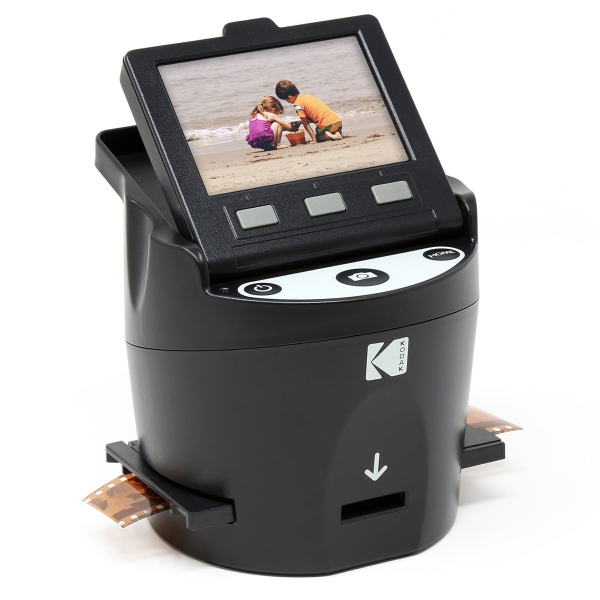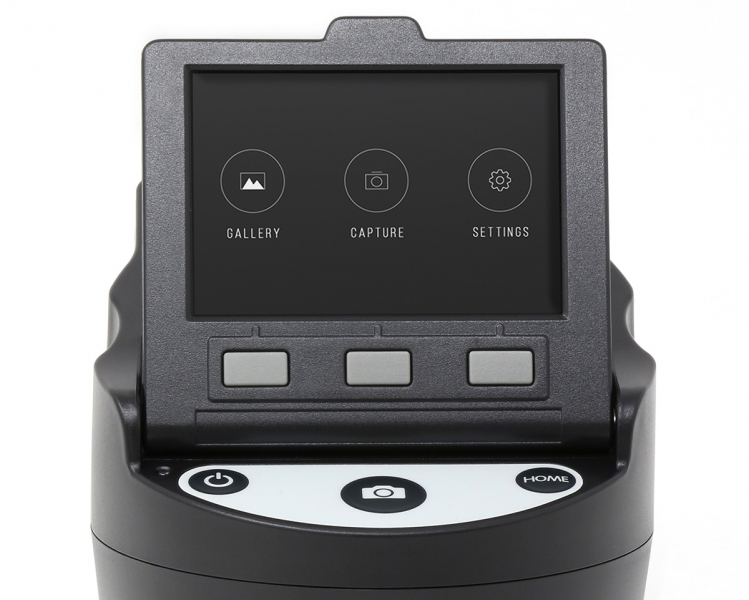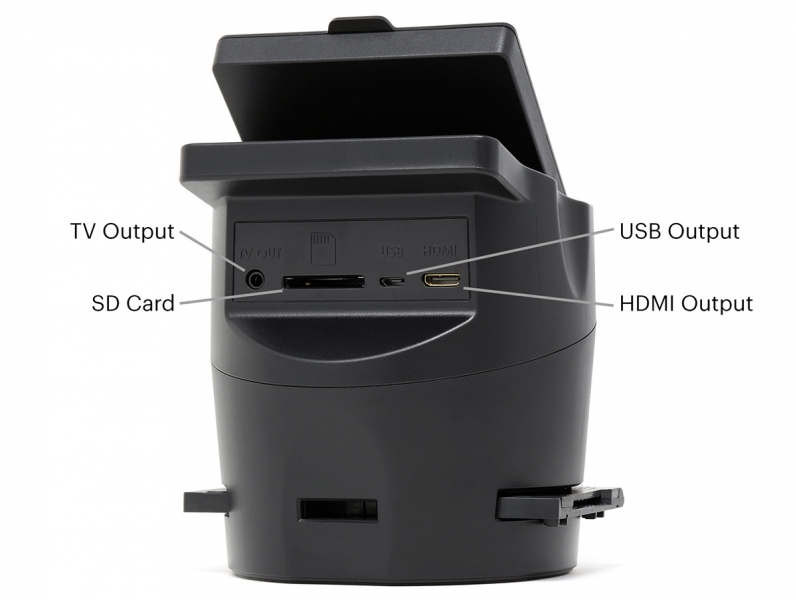Kodak Scanza Digital Film Scanner is easy peasy
Kodak's Scanza Digital Film Scanner makes it easy to digitize film negatives and slides. It uses digital capture instead of tedious multi-pass scanning.
4.11.2018
The Kodak Scanza Digital Film Scanner is by far the easiest way I’ve come across to digitize film negatives and slides. Calling it a scanner is a bit of a misnomer as this device eschews the tedium of multi-pass scanning in favor of digital capture. Users can choose a 14-megapixel or interpolated 22-megapixel resolution capture to be saved directly to an SD card. Each capture takes only about a half-second.
 Adding to its efficiency, the Scanza uses simple adapters that allow you to feed the negatives and slides through instead of loading and unloading holders into a scanner for every negative strip and slide frame. This comes in particularly handy for digitizing uncut rolls of negatives.
Adding to its efficiency, the Scanza uses simple adapters that allow you to feed the negatives and slides through instead of loading and unloading holders into a scanner for every negative strip and slide frame. This comes in particularly handy for digitizing uncut rolls of negatives.
Be cautious to handle negatives and slides with care. The adapter can leave marks on older negatives that are curved with age. If that’s the case, you can remove the adapter, open it, realign the negative for the next frame, close it, and reinsert it.

The user controls are simple, and you can even do basic color and brightness adjustments. The adapters allow you to digitize 35mm, 126, 110, Super 8, and 8mm negatives and slides.
These are excellent scans given the minimal effort and time to create them and the affordable price of the device ($169.99). You won’t get the quality of a drum scan; however, if you have decades of poorly labeled slides and negatives you’d like to assess and digitize, the Kodak Scanza Digital Film Scanner is the way to go.

Tags: film photography gear

